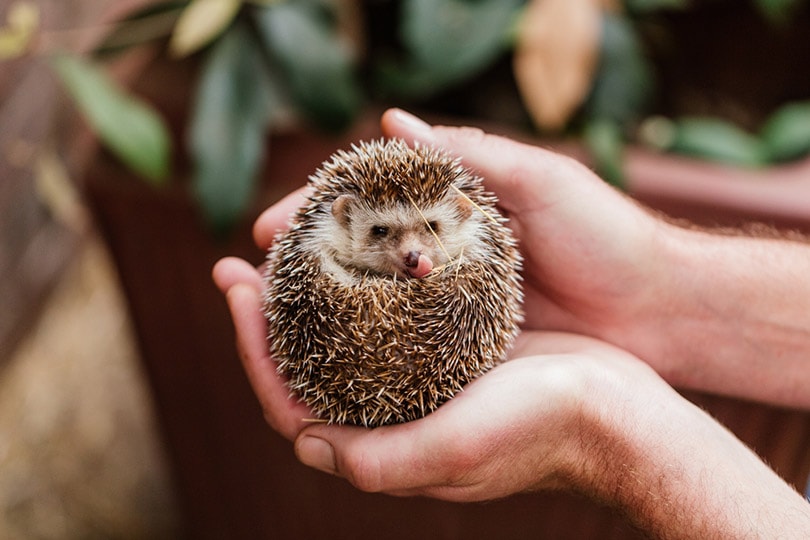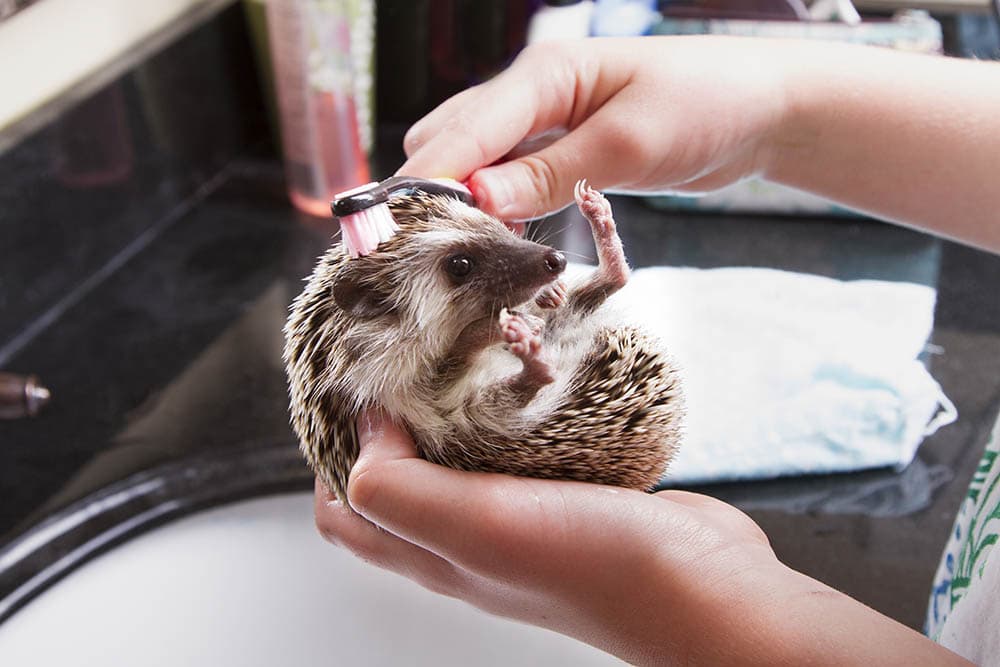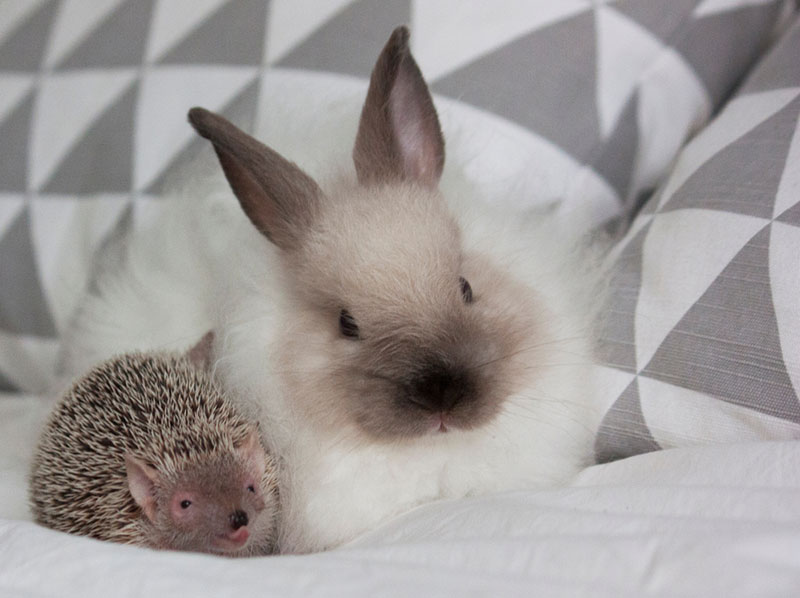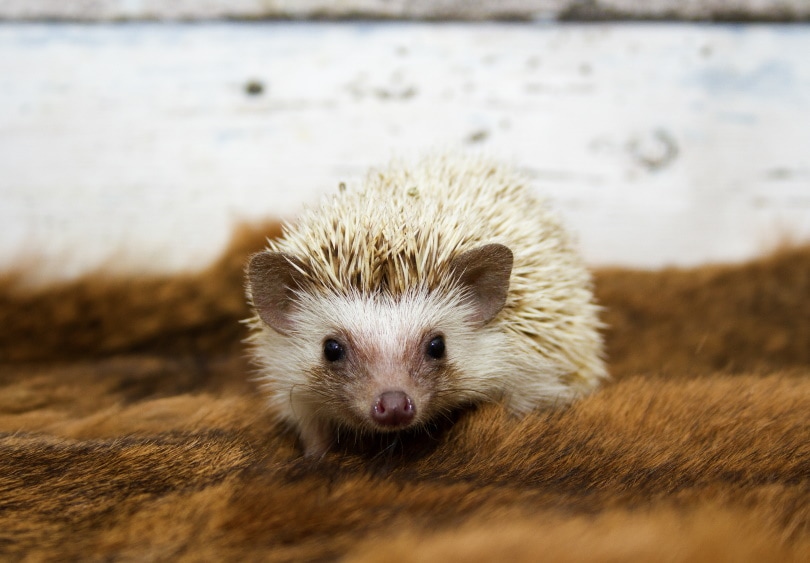
Click to Skip Ahead
Echidnas and hedgehogs look very much alike. They both have spikes all over their bodies to protect themselves from predators, and they are roughly the same size. However, the similarities end there because these are two completely different animals. They are both mammals, but two very different types of mammals. They reproduce differently and even walk differently. Here is everything that you need to know about the differences between echidnas and hedgehogs.

Visual Differences

While the hedgehog and echidna look similar, there are obvious visual differences to note. First, the echidna has a thinner, longer muzzle than the hedgehog does. An echidna also has thinner, sharper quills. A hedgehog’s feet are much smaller, while the echidna has long nails that protrude from their feet.
The hedgehog has a short, round face and large round eyes. Echidnas have long, thin foreheads and small round eyes. The hedgehog’s ears are rounded and protrude from the sides of their head, while the Echidna’s ears cannot be seen through their fur and quills.

At a Glance

Echidna Overview
Named after a Greek mythological creature, the echidna is a small monotreme mammal that belongs to the Techyglossidae family. The platypus and the echidna are the only living mammals in existence today that lay eggs. These animals mostly eat ants and small insects. Echidnas can be found living in the wilds of Australia, where it is illegal to keep them as pets.
These animals do not like extreme weather and prefer to shelter from severe heat and chilly winds in caves, under thick vegetation, and between the crevices of rock formations. They typically live in forests and wooded areas. They maintain large territories, but the territory of one group of echidna may overlap with the territory of another.

Characteristics & Appearance
The echidna is a medium-sized animal that can weigh up to 13 pounds when fully grown. They have extremely coarse fur and long, stout quills covering their bodies. Their fur is typically black or brown, and their eyes are dark. These animals have unique beaks that help them detect insects and ants at mealtime.
Their legs are short and stout, and they have long claws that help them dig up food and shelter when necessary. Their snouts are long and thin, protruding out much further than the face. They have no teeth and extremely small mouths, which is why their preferred prey is so small. They use their sticky tongue to grab their food.
Uses
Echidnas are wild animals living in Australia and have not been domesticated for any reason. If any echidnas are living in captivity, it is because they are endangered in some way. It is illegal to capture or keep an echidna no matter what time of year it is or what area of Australia the animal is in. Therefore, there is no human use for this animal other than the benefits that it provides nature by keeping ant and insect populations under control.


Hedgehog Overview
The hedgehog is a mammal that is part of the Erinaceidae family. Several different species of hedgehog live around the world in places such as Asia, Europe, and parts of Africa. Hedgehogs are imported into places like the United States to be kept as pets. These animals have been around for about 15 million years, and they have evolved very little.
Hedgehogs live in fields, forests, and prairies. They are omnivores and can eat a wide variety of different things, including worms, slugs, millipedes, and beetles. They will also occasionally eat fruit if it is easily accessible. These animals usually hunt for food at night when their natural predators are sleeping.

Characteristics & Appearance
Hedgehogs are small creatures that have spiky quills all over their bodies. The quills are not barbed, so they do not stick in the skin like a porcupine’s quills would. Hedgehogs are usually brown all over, with lighter-colored quill tips. These animals roll up into balls when they are threatened by predators, which makes it tough for the predators to get to them.
They have small round ears that protrude from their head, big round eyes that are dark in color, and small mouths on slightly long snouts. Unlike the echidna, they have a mouth full of teeth. Their claws are short but powerful. Their bodies are stout and compact, making them look like spiky footballs when they are not in motion.
Uses
Hedgehogs are kept as companion pets in the United States and other parts of the world. They are not typically raised for food or any other reason. If they are not living as pets, they are living in nature as wild animals.


What Are the Differences Between Echidnas and Hedgehogs?
The biggest difference between the echidna and the hedgehog is that they belong to two different species. They have different facial features, and the hedgehog is a bit larger than the echidna but has a rounder body that makes them look more compact. They both eat insects, but the hedgehog’s diet is much more varied than that of the echidna’s. Overall, these are different animals that deserve to be seen as such.

Final Thoughts
Both hedgehogs and echidnas are interesting animals with many unique qualities. They live in different parts of the world and are different types of animals in general. However, there are a few similarities between the two species that can easily lead people to believe that they belong to the same family.
- Next on your reading list: Hedgehog Self-Anointing: What Is It and Why Do They Do It?
Featured Image Credit: Top: Echidna, Pixabay | Buttom: Hedgehog, byapryl, Pixabay








